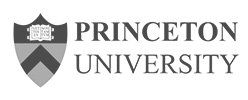Shoulder Instability Repair
Introduction
The shoulder is the most flexible joint in the body. It allows for a range of movements of the hands. This however makes it the most unstable joint of the body. It is a ball and socket joint where the head of the upper arm bone (humerus) articulates to the shallow cavity in the shoulder blade (glenoid). The labrum is the fibro-connective tissue surrounding the glenoid cavity and increases its depth and surface area to provide better fit for the half-spherical head of the long arm bone. A group of ligaments form a capsule around the shoulder joint and play a very important role in providing stability to the otherwise unstable shoulder joint. The stability is further enhanced by the group of tendons and muscles that join the head of the humerus to the deeper muscles.
The ball of the shoulder joint sometimes comes out of the socket partially which is called subluxation or completely which is called dislocation. Once this occurs it damages and loosens the supporting capsule of tendons and ligaments around the shoulder joint making the problem more and more recurrent. This condition is termed as chronic shoulder instability.
Depending on whether the shoulder pulls out in one direction or many directions instability is classified as unidirectional and multidirectional shoulder instability.
Causes
Some people are born with loose shoulder capsule making them prone to shoulder instability. The shoulder capsule may also loosen due to repetitive overhead activities as in certain sports such as racket sports and swimming. Shoulder instability due to loose shoulder capsule is called as multidirectional shoulder instability and results in shoulder coming out of the socket in more than one direction.
Severe injury or trauma to the shoulder may lead to shoulder dislocation and an injury to the labrum. Even fall from the cycle or from the stairs can cause shoulder dislocation. Depending on the position of the tear in the labrum the shoulder instability occurs in either the anterior, posterior or inferior direction. It cannot occur in superior direction because of the presence of bony extension of the shoulder blade the acromion on top of the humeral head.
Symptoms
People realize that they have unstable shoulder when the shoulder dislocates or when they have a persistent feeling that their shoulder is loose and may come out of the socket. People with shoulder instability experience pain with certain movements of the shoulder. Shoulder ball when misaligned or comes out of the socket results in severe pain and swelling
Diagnosis
Diagnosis of shoulder instability is done based on the symptoms, medical history and physical examination. The X-ray and Magnetic resonance imaging are done to assess whether the dislocation has caused any damage to bones or soft tissue respectively.
Treatment
Shoulder dislocation or subluxation results in severe pain in the shoulder. The person should be taken to the orthopedist immediately. The orthopedist will put the arm back in the socket. To give rest to the affected shoulder, sling would be put for that arm. Medications are given to provide relief from pain and reduce swelling. After the sling is removed some exercises to strengthen the shoulder muscles are advised as they play important role in stabilizing the shoulder joint.
The person can live with shoulder instability but have to always avoid activities that may lead to shoulder dislocation. When shoulder instability starts to interfere with the daily life, surgery is advised. Surgery is also advised when shoulder instability is due to shoulder injury.
Surgery can be open surgery or arthroscopy. For open surgery the overlying subscapularis muscle needs to be cut to reach the shoulder joint and then reattached which is shortened during the process. Thus after open surgery the person loses around 12 degree of external rotation of the shoulder joint. Both surgery aims to tighten the supporting shoulder capsule to prevent shoulder instability and to repair the torn labrum and any torn ligament.
Surgery done to tighten the capsule is called anterior capsular shift. Here a T shaped incision is made in the capsule and the overlapping ends of the cut are stitched together.
Superior Labrum Anterior Posterior lesion repair surgery Here the labrum is torn at the anterior posterior side or top of the glenoid cavity. The shoulder ball misaligns but never dislocates. The labrum is stitched to the bone using biodegradable tack or suture anchors which are drilled into the bone.
Bankart lesion repair surgery is done to repair the tear in the labrum when it is in the anterior side and is repaired using suture anchors or sutures to attach the labrum to the socket. In case of small tears debridement is done which involves removing any small torn parts of labrum which get stuck when the shoulder is moved.
Latarjet surgery is an open surgery which is done when the bone of the socket is damaged because of repeated dislocations. The worn out bone is replaced by the bone graft from another part of shoulder, coracoid process. The bone graft is attached to the bone using screws.
Arthroscopy is minimally invasive surgery done as an outpatient procedure using arthroscope. The advantages of arthroscopy are less pain and complications after the procedure as compared to an open surgery.
Arthroscope is a pen-thick instrument which consists of a lens, a light system and a camera. A button sized hole is made in the shoulder and arthroscope is inserted through the hole. Fluid flows through the arthroscope and provides the surgeon with a clear view of the inside of the shoulder joint. It also minimizes bleeding. The surgeon can see the images from the arthroscope on the monitor. Necessary surgical instruments which are also thin and small as arthroscope are introduced in the joint through separate holes one or three depending on the type of repair needed to be done in the joint. After surgery the incisions are closed by giving stitches or with small sterile bandage strips. One is kept in the hospital for few hours after the surgery for observation and is discharged the same day.
Post-operative care
After the surgery pain medications are given. The arm of the affected shoulder is tied in a sling for a period as recommended by the doctor. Physical therapy is advised to improve shoulder mobility and strength after the surgery.
Risks and complications
Complications of shoulder arthroscopy are infection, bleeding, damage to any nerve or blood vessel or delayed healing after the surgery. In certain cases stiffness of shoulder joint may occur after the surgery.
Summary
Shoulder instability leads to misalignment of the ball of the shoulder joint in the socket and leads to severe pain and swelling of the shoulder .It may also cause paralysis of the arm. It may be inborn or may result due to injury. Inborn shoulder instability can be managed by improving the strength of the shoulder muscles through physical exercises. In case it interferes with daily life or leads to labrum tear, surgery is advised. Labrum tear due to injury can also only be repaired by surgery.
Arthroscopy is preferred but certain cases can be treated only by open surgery. Rehabilitation exercises play an important role in providing strength and mobility to the shoulder after the surgery.







